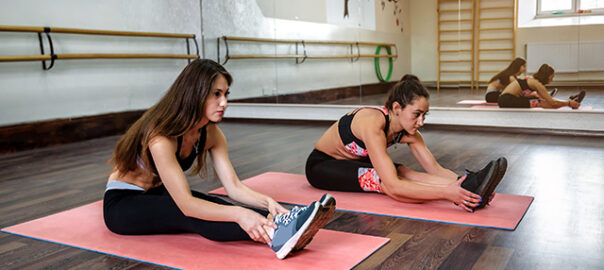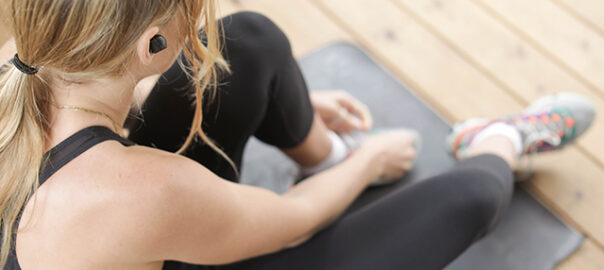Introduction
Pilates is a popular fitness practice that focuses on strengthening the core muscles, improving flexibility, and enhancing overall body alignment. It was developed by Joseph Pilates in the early 20th century and has gained a massive following worldwide due to its numerous physical and mental benefits. Pilates teacher training Sydney have the right approach for those who want to learn in Pilates.
What is Pilates?
Pilates is a low-impact exercise system that targets the deep muscles of the abdomen and back, also known as the “powerhouse.” It emphasizes controlled movements and precise alignment to improve strength, stability, and posture.
The History of Pilates
Joseph Pilates created the Pilates method during World War I while he was interned in a camp for prisoners of war. He used bed springs and other equipment to help rehabilitate injured soldiers, which later evolved into the modern Pilates equipment we know today.
The Benefits of Practicing Pilates
Physical Benefits
Pilates offers a myriad of physical benefits, including improved flexibility, increased muscle strength, enhanced balance, and better body awareness. Regular practice can lead to a toned and sculpted physique.
Mental Benefits
In addition to the physical benefits, Pilates also provides mental advantages such as reduced stress levels, increased focus, and improved concentration. The mindful approach to movement helps practitioners find inner peace and relaxation.
Core Strength and Flexibility
One of the key focuses of Pilates is developing core strength, which is essential for a stable and well-supported spine. Additionally, Pilates enhances flexibility, making daily activities easier and reducing the risk of injuries.
Getting Started with Pilates
Finding the Right Instructor and Studio
To get the most out of your Pilates journey, it’s crucial to find a qualified instructor and a studio that suits your needs. Look for certified instructors with experience and a positive teaching style that motivates and challenges you.
Equipment and Attire
Pilates can be practiced on a mat or using specialized equipment such as the reformer, Cadillac, or chair. Depending on your preference and experience level, you can choose between group classes or private sessions.
When it comes to attire, comfort and flexibility are key. Opt for form-fitting clothing that allows for a full range of movement. Avoid loose or baggy outfits that may hinder your ability to perform the exercises with precision.
My Journey into Pilates
Discovering the Practice
I stumbled upon Pilates during my quest to find a fitness routine that not only sculpted my body but also provided a mental escape from the stresses of everyday life. Intrigued by the promises of a mind-body connection, I decided to give Pilates a try.
From my very first class, I was hooked. The precise movements, the focus on breath, and the challenge of engaging my core in every exercise left me feeling empowered and invigorated.
Enrolling in the Instructor Course
My passion for Pilates grew exponentially, and I soon found myself contemplating the idea of becoming a certified Pilates instructor. I wanted to share the incredible benefits I experienced with others and help them transform their lives through this practice.
After thorough research, I enrolled in a comprehensive Pilates instructor course. The course promised to delve deep into the anatomy, teaching techniques, and the philosophy behind Pilates.
What I Learned During My Pilates Instructor Course
Anatomy and Physiology
Understanding the human body’s structure and mechanics was a fundamental aspect of the instructor course. Learning about muscles, bones, and joints allowed me to tailor exercises to suit individual needs and address any physical limitations.
Teaching Techniques and Communication Skills
As an instructor, effective communication is vital to guide students through exercises safely and efficiently. I learned how to cue movements effectively, use demonstrations, and provide clear instructions to create a seamless flow in each class.
Class Management
A well-structured class is essential to keep students engaged and motivated. I acquired skills to plan and execute classes that catered to various fitness levels and addressed specific goals, ensuring every participant felt challenged and accomplished.
Creating Effective Workouts
Pilates offers a vast array of exercises that can be combined in numerous ways. During the course, I learned how to create dynamic and balanced workouts that targeted different muscle groups while maintaining variety and interest.
Modifications and Adjustments
Each individual’s body is unique, and some participants may require modifications or adjustments to perform exercises safely. I gained the ability to provide personalized modifications to accommodate injuries, limitations, or specific needs.
The Importance of Pilates in Everyday Life
Improving Posture and Alignment
Modern lifestyles often lead to poor posture and alignment issues, which can result in discomfort and pain. Pilates focuses on alignment, helping participants correct imbalances and achieve better posture in daily activities.
Stress Relief and Mindfulness
In our fast-paced world, stress can take a toll on our mental and physical well-being. Pilates encourages mindfulness, emphasizing concentration on the present moment and deep breathing, which can reduce stress and improve mental clarity.
Overcoming Challenges and Embracing Progress
Dealing with Self-Doubt
During my journey to becoming a Pilates instructor, I encountered moments of self-doubt. However, I learned to embrace these challenges as opportunities for growth and self-discovery. With determination and perseverance, I overcame my insecurities.
Celebrating Successes
As I progressed in my training, I witnessed significant improvements in my own practice and observed my future students’ positive transformations. Celebrating these successes motivated me to keep pushing forward.
Inspiring Others to Embrace Pilates
The Joy of Teaching
Becoming a Pilates instructor brought immense joy to my life. Witnessing my students’ progress and seeing their excitement as they achieved new milestones fueled my passion even further. Being able to guide and support others on their Pilates journey became an incredibly rewarding experience.
Motivating Students
As an instructor, I realized the importance of motivation in keeping students engaged and committed to their practice. I utilized positive reinforcement and encouragement to inspire them to push beyond their limits and discover their full potential.
Sharing My Transformation
My personal transformation through Pilates served as a powerful testament to the practice’s efficacy. Sharing my own journey with my students not only built trust but also motivated them to embrace Pilates wholeheartedly, knowing that it could bring about positive changes in their lives as well.
Conclusion
My journey into Pilates and subsequent training as an instructor has been transformative, both physically and mentally. The practice of Pilates goes beyond mere exercise; it fosters a deep mind-body connection and empowers individuals to take charge of their well-being.
If you are seeking a fitness regimen that not only strengthens your body but also nurtures your mind and spirit, I highly recommend trying Pilates. Whether you are a seasoned fitness enthusiast or a beginner looking to embark on a new journey, Pilates has something to offer everyone. Read more about the individuals that are enrolling in our Pilates class.


